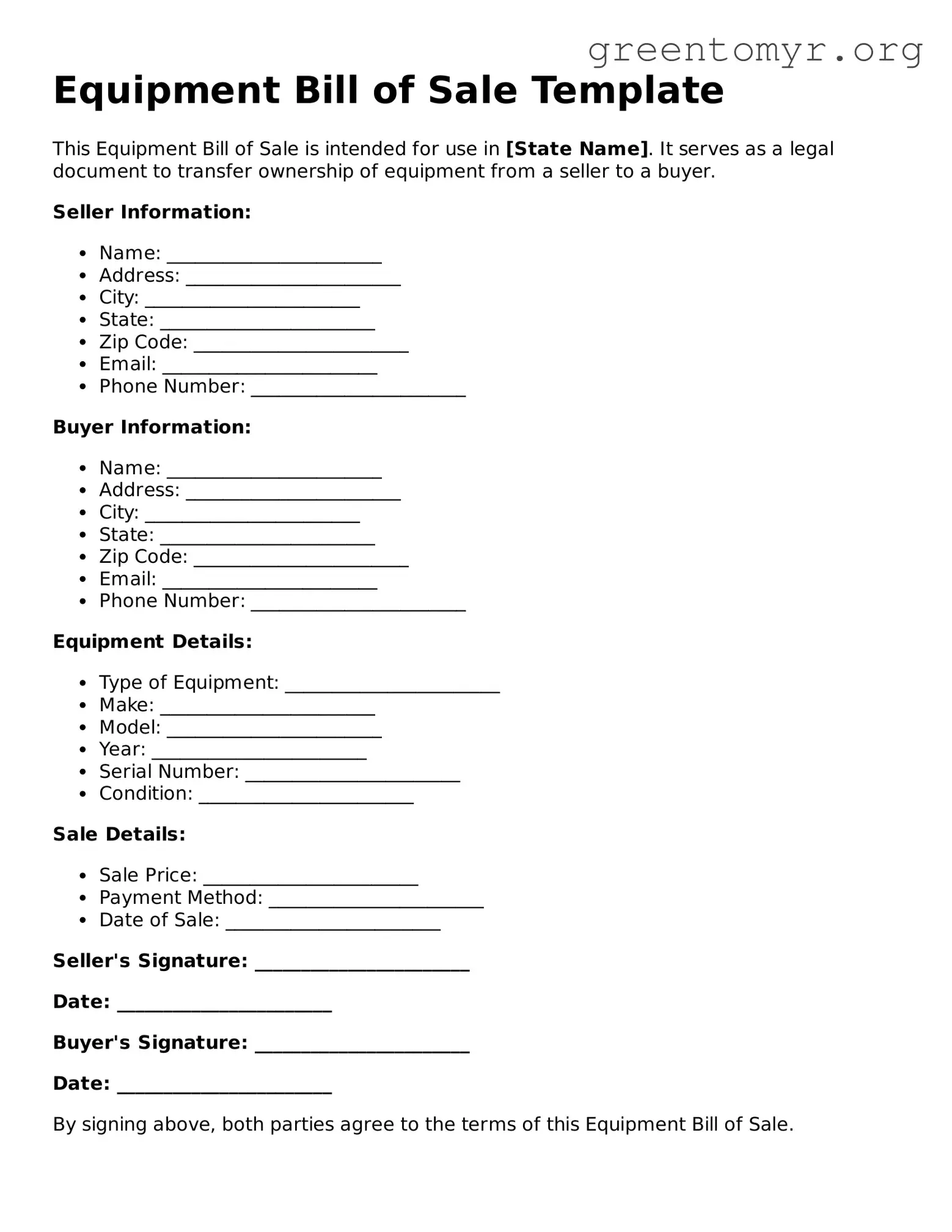When completing an Equipment Bill of Sale form, many people unintentionally make mistakes that can lead to confusion or disputes later on. One common error is failing to provide a proper description of the equipment being sold. A vague description might leave room for interpretation. Be specific about the item’s make, model, serial number, and condition to avoid potential issues.
Another mistake is neglecting to include the purchase price. This figure plays a crucial role in the transaction's validity. Leaving it blank or writing an incorrect amount can create complications. Ensure that the agreed-upon price is clearly stated.
People often overlook the importance of including the seller's and buyer's complete information. Missing details like addresses or contact numbers can make it difficult to resolve any future disputes. It is best practice to include full names, addresses, and any relevant identification numbers.
Not signing the form is a common pitfall as well. Both the buyer and seller must sign the Equipment Bill of Sale to authenticate the transaction. If a signature is absent, the document may not hold up in legal matters.
An insufficient date can also be a significant error. It's crucial to indicate the date of the transaction. Failing to do so might complicate matters, especially if disputes arise later regarding when the sale took place.
Some people forget to specify any warranties or “as-is” clauses. These terms clarify whether the buyer accepts the equipment in its current state or if there are guarantees about its function. Ambiguity in this area can lead to further misunderstandings.
Additionally, many individuals fail to keep a copy of the completed bill of sale for their records. Documentation is essential for both parties, especially in case there is a need for reference in the future. Keeping copies can provide peace of mind.
Finally, rushing through the process without reading the entire document can lead to other mistakes. Taking time to review every section can help prevent oversights and ensure that all information is accurate and complete. Attention to detail can save both parties from headaches down the road.
